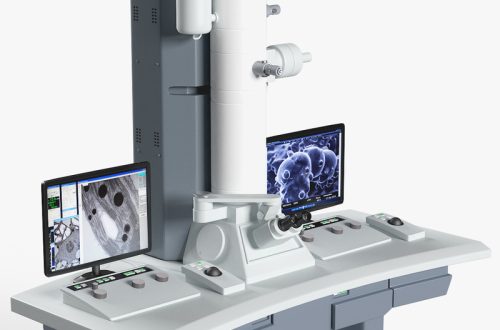Part 1: Assess your current office practices and energy use
1. Conduct an energy audit:
Before making any significant changes to your green office’s energy consumption, it’s crucial to understand your current energy usage patterns. An energy audit provides a comprehensive assessment of your office’s energy consumption, identifying areas where energy is being wasted and where improvements can be made. This data-driven approach ensures that any changes implemented are targeted and effective, maximizing energy savings and minimizing costs. By conducting an energy audit, you can gain valuable insights into your office’s energy performance and develop a customized plan to reduce your environmental impact.
2. Assess current waste management practices:
A comprehensive assessment of your office’s waste management practices is essential for identifying opportunities to reduce your environmental impact. By carefully examining how waste is generated, collected, and disposed of, you can uncover areas where waste can be reduced, reused, or recycled. This might involve implementing waste reduction programs, such as composting food scraps or encouraging employees to bring reusable water bottles and coffee mugs. Additionally, you can explore options for recycling materials that are currently being discarded, such as paper, plastic, and electronic waste. By taking a proactive approach to waste management, you can minimize your office’s environmental footprint and contribute to a more sustainable future.

Part 2: Set sustainability goals and create a green team
1. Set Clear Sustainability Goals: A Roadmap for Success
Once you have a comprehensive understanding of your office’s energy usage and waste management practices, it’s time to set specific, measurable, achievable, relevant, and time-bound (SMART) goals for improvement. These goals will provide a roadmap for your sustainability initiatives, ensuring that your efforts are focused and effective.
When setting goals, consider factors such as your office’s size, industry, and budget. For example, a small office might aim to reduce energy consumption by 10% within the next year, while a larger organization might set a goal of achieving carbon neutrality within five years. By setting clear and ambitious goals, you can motivate your team and track your progress towards a more sustainable workplace.
2. Create a Green Team: A Collaborative Approach
Building a green office requires a collaborative effort from all levels of the organization. Consider forming a green team made up of employees from different departments and levels of the organization. This team can help spread awareness about sustainability initiatives, drive change, and ensure that green practices are integrated into daily operations.
A green team can take on a variety of responsibilities, such as conducting energy audits, organizing waste reduction campaigns, and researching eco-friendly products and services. By involving employees from different departments, the green team can ensure that sustainability is a priority throughout the organization. Additionally, the team can help to foster a culture of environmental responsibility and encourage employees to participate in green initiatives.
Part 3: Implement energy-efficient practices and technologies
1. Upgrade to LED Lighting: A Bright Idea
One of the most straightforward and effective ways to reduce energy consumption in an office is to switch to LED lighting. LED bulbs are significantly more energy-efficient than traditional incandescent bulbs, using up to 75% less electricity. This translates to substantial savings on energy bills and a reduced carbon footprint.
In addition to their energy efficiency, LED bulbs also offer several other advantages. They have a much longer lifespan than incandescent bulbs, reducing the need for frequent replacements and minimizing waste. LED bulbs are also available in a wide range of colors and styles, making it easy to find the perfect lighting solution for any office space.
2. Use Energy-Efficient Equipment: A Green Investment
Investing in energy-efficient office equipment is another crucial step towards a greener workplace. Computers, printers, and copiers are often significant energy consumers, and upgrading to models with ENERGY STAR certification can lead to substantial savings on electricity bills. These devices are designed to use less energy while maintaining high performance, reducing the overall carbon footprint of the office.
Beyond energy efficiency, modern green office equipment often incorporates features that promote sustainability. For example, some printers have automatic duplexing capabilities, allowing for double-sided printing and reducing paper consumption. Additionally, many devices are designed to be more durable and require less frequent replacements, minimizing the environmental impact of manufacturing and disposal.

Part 4: Encourage sustainable transportation and commuting options
1. Offer Incentives for Alternative Transportation: A Greener Commute
Encouraging employees to use alternative modes of transportation can significantly reduce the green office’s carbon footprint and improve air quality. Consider offering incentives to motivate employees to choose greener commuting options.
One effective strategy is to provide subsidies for public transit passes. This can make public transportation more affordable and accessible for employees, encouraging them to leave their cars at home. Additionally, you can offer bike commuting benefits, such as reimbursement for bike maintenance or bike-sharing memberships. These incentives can make cycling a more attractive option for employees who live within a reasonable distance from the office.
By offering incentives for alternative transportation, businesses can promote a healthier and more sustainable commute for their employees. This can lead to improved employee health, reduced traffic congestion, and a positive impact on the environment.
2. Provide Amenities for Cyclists and Walkers: A Supportive Environment
Creating a supportive environment for cyclists and walkers can encourage employees to choose these sustainable modes of transportation. By providing amenities such as bike racks, showers, and changing areas, businesses can make it easier for employees to bike or walk to work.
Bike racks ensure that employees can safely store their bikes on the premises, while showers and changing areas provide a convenient place to freshen up after their commute. These amenities can make cycling and walking more appealing to employees, especially those who live within a reasonable distance from the office.
By investing in amenities for cyclists and walkers, businesses can demonstrate a commitment to sustainability and employee well-being. This can create a more positive and attractive workplace, attracting and retaining top talent. Additionally, these amenities can contribute to a healthier and more active workforce, leading to improved productivity and reduced absenteeism.

Part 5: Establish a green purchasing policy and reduce waste
1. Create a green purchasing policy:
To create a more sustainable green office environment, it’s essential to establish guidelines for purchasing office supplies and materials that prioritize environmental impact. When making purchasing decisions, consider products with minimal packaging, as excessive packaging contributes to waste. Additionally, prioritize items made from recycled materials, such as recycled paper and plastic, to reduce the demand for virgin resources. Look for products certified by recognized sustainability standards, like FSC (Forest Stewardship Council) for paper or Fair Trade for other items, ensuring that they are produced ethically and responsibly. By implementing these guidelines, you can significantly reduce your office’s environmental footprint and contribute to a more sustainable future.
2. Reduce paper usage:
The average office worker uses a substantial amount of paper each year, contributing to deforestation and landfill waste. To reduce paper consumption and minimize your green office’s environmental impact, encourage employees to double-sided print whenever possible. Additionally, promote the use of digital document storage to eliminate the need for paper copies. Finally, encourage electronic communication, such as email and video conferencing, to reduce reliance on paper-based correspondence. These simple steps can significantly reduce your office’s paper consumption and contribute to a more sustainable workplace.
Part 6: Educate and engage employees in sustainability efforts
1. Provide training and resources:
Educate employees on the importance of sustainability and provide training on how they can contribute to the office’s green initiatives. Consider hosting workshops or lunch and learns on topics such as energy conservation and waste reduction.
2. Recognize and reward sustainability efforts:
Celebrate and acknowledge the efforts of employees who contribute to the green office. Consider implementing a recognition program or incentives for those who consistently demonstrate sustainable practices.




